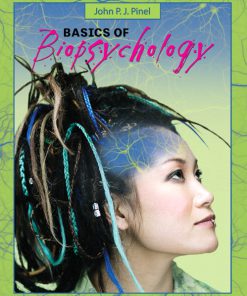Biological Anthropology 3rd Edition Stanford Allen Anton Test Bank
$35.00 Original price was: $35.00.$26.50Current price is: $26.50.
Biological Anthropology 3rd Edition Stanford Allen Anton Test Bank
This is completed downloadable of Biological Anthropology 3rd Edition Stanford Allen Anton Test Bank

Product Details:
- ISBN-10 : 0205150683
- ISBN-13 : 978-0205150687
- Author: Craig Stanford (Author), John S. Allen (Author), Susan C. Antón (Author)
Biological Anthropology, 3/e is written to appeal to a wide range of students. It continues to build upon the strength and success of its first and second editions by integrating the foundations of the field with the most current innovations happening today.
Over the past 40 years, biological anthropology has rapidly evolved from the study of physical anthropology into biological anthropology. Biological anthropology is now an integrative combination of information from the fossil record and the human skeleton, genetics of individuals and of populations, our primate relatives, human adaptation, and human behavior. The third edition of Biological Anthropology combines the most up-to-date, comprehensive coverage of the foundations of the field with modern innovations and discoveries.
Table of Content:
Chapter 3 Genetics: From Genotype to Phenotype
1. Early researchers such as Mendel and Bateson learned about inheritance __________.
a. by looking at the genes themselves
b. by replicating small sequences of DNA
c. by studying human
d. none of these
(Answer d; pages 67)
2. A gene that contains information important to initiating transcription is a gene.
a. structural
b. regulatory
c. coding
d. phenotype
(Answer b; page 68)
3. Structural genes __________.
a. contain information to make proteins
b. are surrounded be regulatory regions
c. may be similar across species
d. all of these
(Answer d; page 68)
4. Regulatory regions are likely to play a stronger role than structural genes in creating variations between related species.
a. True
b. False
(Answer a; page 68)
5. In some cases, the __________ interacts with factors in the environment to create a __________.
a. phenotype, genotype
b. allele, regulatory region
c. genotype, phenotype
d. protein, genotype
(Answer c; pages 69)
6. Which of the following best defines the term genotype?
a. the actual alleles an organism carries
b. the physical expression of an organisms genes
c. the role of the environment plays in gene expression
d. an organisms haploid gametes
(Answer a; page 69)
7. The observable physical features of an organism comprise its __________.
a. genotype
b. phenotype
c. allele frequency
d. recessive allele
(Answer b; pages 69)
8. A recessive allele __________.
a. needs to be present on only one chromosome to be expressed
b. is never expressed
c. needs to be present on both chromosomes to be expressed
d. occurs as a regulatory gene only
(Answer c; page 69)
9. An allele that needs to be present on only one chromosomal locus to be expressed is called a allele.
a. recessive
b. structural
c. dominant
d. phenotypic
(Answer c; page 69)
10. If the allele for type O blood is recessive and the allele for type A blood is dominant, a person with a A and O alleles would have type __________ blood.
a. A
b. O
c. AO
d. OA
(Answer a; page 69)
11. Environmental factors play little to no role in determining obesity.
a. True
b. False
(Answer b; pages 70)
12. Mendel’s work proved the blended nature of inheritance.
a. True
b. False
(Answer b; page 71)
13. The pea plants Mendel studied were ideal because they display __________ for several independent traits.
a. blended inheritance
b. no variation
c. dominant alleles
d. dichotomous variation
(Answer d; page 72)
14. In Mendel’s experiments, the F1 generation __________.
a. was a mating of two lines that were true-breeding
b. had a 3:1 ratio in the expression of the original parental lines
c. revealed dominant and recessive traits
d. was a mating of different species
(Answer a; page 73)
15. Which of the following is NOT a characteristic of Mendel’s F2 generation?
a. it had a 3:1 ratio in the expression of the original parental lines
b. dominant and recessive traits were revealed
c. it was a mating of two lines that were true-breeding
d. all of these
(Answer c; pages 73
16. Mendel’s first postulate states that hereditary characteristics are controlled by blended units.
a. True
b. False
(Answer b; page 73)
17. The “unit factors” mentioned in Mendel’s postulates correspond with which biological unit?
a. alleles
b. cells
c. entire DNA strands
d. chromosomes
(Answer a; page 73)
18. Mendel found that when an individual has two different unit factors responsible for a characteristic __________.
a. that characteristic was not expressed
b. only the allele from the father was expressed
c. the factor that is expressed is dominant
d. only the allele from the mother was expressed
(Answer c; page 73)
19. Which of the following best describes Mendel’s Law of Segregation?
a. dominant alleles suppress recessive alleles
b. inheritance is governed by discrete particles
c. segregating pairs of unit factors assort independently
d. chromosomes randomly segregate into sex cells
(Answer d; page 73)
20. Dihybrid cross experiments were essential to __________.
a. Mendel’s Law of Segregation
b. Mendel’s Law of Independent Assortment
c. discovering the particulate nature of inheritance in general
d. discovering the nature of dominant and recessive alleles
(Answer b; page 74)
People Also Search:
biological anthropology 3rd edition stanford allen anton
biological anthropologists study
biological anthropology 3rd edition download scribd
biological anthropology 3rd edition test bank download pdf
Related products
Test Bank
Test Bank for Essentials of Business Law and the Legal Environment, 11th Edition: Richard A. Mann











